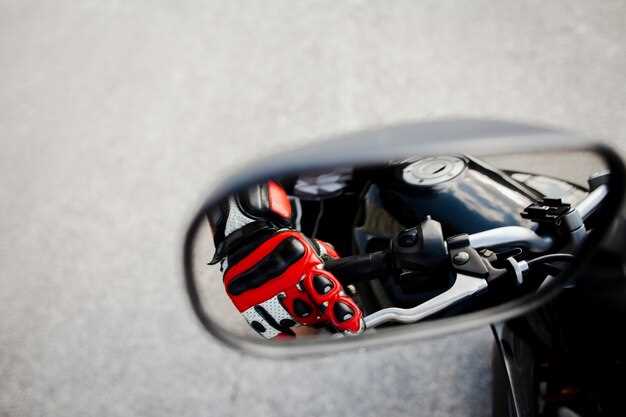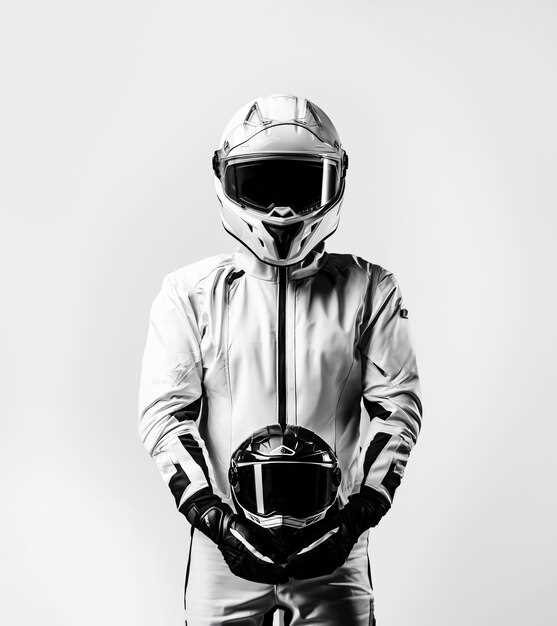

Motorcycle racing, an exhilarating sport that combines speed, skill, and strategy, demands not only talent but also the right gear to ensure both performance and safety. The choice of equipment can significantly influence a rider’s success on the track. Whether you’re an aspiring racer or a seasoned professional, understanding the essential gear is paramount to achieving your racing goals.
One of the most critical components of racing gear is the helmet. A high-quality helmet is designed to provide maximum protection while ensuring comfort and visibility. It is essential to select a helmet that meets recognized safety standards, as it serves as the first line of defense against potential injuries. Beyond safety, a well-fitted helmet can enhance aerodynamics, reducing drag during high-speed maneuvers.
In addition to a helmet, the riding suit is indispensable for any motorcycle racer. Made from durable materials such as leather or synthetic fabrics, a good riding suit offers protection against abrasions and impacts. It should also feature appropriate padding and armor in critical areas, ensuring that riders remain safe without sacrificing mobility. Investing in top-notch racing gear not only elevates performance but also instills confidence in riders as they navigate the twists and turns of the track.
Beyond these basics, other accessories such as gloves, boots, and knee guards play vital roles in a racer’s overall performance and safety. Each piece of equipment contributes to a holistic approach to racing, protecting riders from potential hazards while enhancing their control over the motorcycle. In this article, we will delve deeper into each piece of essential gear, helping you equip yourself for success on the racetrack.
Choosing the Right Helmet for Track Performance
Selecting the appropriate helmet is crucial for achieving optimal track performance in motorcycle racing. A well-fitted, high-quality helmet not only provides safety but also enhances comfort and aerodynamics. Here are the key factors to consider when choosing the right helmet:
- Safety Standards:
- Ensure the helmet meets or exceeds recognized safety standards such as ECE, DOT, or Snell.
- Check for certifications indicating that the helmet has passed rigorous impact tests.
- Fit and Comfort:
- Choose a helmet that fits snugly without being overly tight.
- Consider trying different brands, as sizing can vary significantly.
- Use proper fitting methods, including trying on helmets for a few minutes to gauge comfort.
- Weight:
- Opt for lightweight helmets made from advanced materials, such as carbon fiber or Kevlar.
- A lighter helmet reduces neck fatigue during long races.
- Aerodynamics:
- Select a streamlined shape to minimize wind resistance at high speeds.
- Consider a helmet with enhancements like spoilers or vents designed to improve airflow.
- Visibility:
- Choose a helmet with a wide visor for a broader field of view.
- Consider anti-fog coatings or Pinlock systems to maintain visibility in varying weather conditions.
- Ventilation:
- Look for models with effective ventilation systems to keep you cool during intense activity.
- Adjustable vents can allow for customization based on weather conditions.
- Communication Systems:
- Some helmets are designed to accommodate Bluetooth communication systems, facilitating interaction with your pit crew.
- Ensure that any built-in communication features do not compromise safety or fit.
Investing time in selecting the right helmet can significantly impact your performance on the track. Prioritize safety and comfort to help ensure a successful racing experience.
Selecting Protective Clothing That Enhances Mobility

When it comes to motorcycle racing, protective clothing is critical for safety, but it should not compromise mobility. Selecting gear that allows for a full range of motion can significantly impact performance on the track. Focus on materials that offer both protection and flexibility. For instance, advanced synthetic fabrics such as Kevlar and Cordura provide high abrasion resistance while remaining lightweight and stretchable.
Look for combinations of leather and textile; hybrid suits often feature leather in high-impact areas for maximum protection while using flexible textiles in regions requiring more movement. Ensure the clothing incorporates articulated design elements, such as pre-curved sleeves and strategically placed stretch panels. These features enhance comfort and natural movement while riding, allowing for better throttle control and body positioning.
Ventilation is another crucial aspect. Well-ventilated gear equipped with mesh panels aids in temperature regulation without hindering mobility. Moreover, opting for clothing with removable liners can help adjust adaptability based on weather conditions, maintaining comfort during races.
Don’t overlook the importance of fit. Ill-fitting gear can restrict movement, so it is essential to select sizes that allow for adjustments, like adjustable straps and closures. This customization ensures a snug yet comfortable fit, enhancing control over the motorcycle. Lastly, consider gear with built-in protective elements, such as armor or padding in critical areas, while ensuring that these components are not bulky, which could limit agility. Choosing the right protective clothing is integral to achieving both safety and performance on the racetrack.
Essential Accessories for Improved Handling and Safety

For motorcycle racers, optimal handling and safety are paramount. Investing in the right accessories can significantly enhance these aspects, leading to better performance on the track. Below are crucial accessories to consider:
1. High-Quality Tires: The foundation of any motorcycle’s handling capabilities lies in its tires. Premium racing tires provide superior grip, stability, and responsiveness in various conditions. Ensure that they are appropriately suited for the specific track environment and weather conditions.
2. Performance Brake Pads: Upgrading to high-performance brake pads can dramatically improve stopping power and reduce fade during intense racing sessions. Look for pads that are designed for track use to enhance feedback and control when applying brakes.
3. Adjustable Suspension Components: A well-tuned suspension allows for better weight distribution and handling dynamics. Investing in adjustable shock absorbers and front forks enables racers to tailor their motorcycle’s suspension setup according to personal riding style and track conditions.
4. Grip Enhancers: Handlebar grips with enhanced textures or added cushioning provide better control and comfort. These improve the rider’s grip, reducing fatigue and enhancing overall handling during long races.
5. Foot Pegs with Grip: Upgraded foot pegs, designed for racing, offer better foot placement and grip. This is crucial for optimal body positioning and control, especially during tight cornering.
6. Riding Suit with Armor: A race-quality suit equipped with impact-absorbing armor provides essential protection without compromising mobility. Look for suits made from high-performance materials that offer abrasion resistance and ventilation for added comfort.
7. Visibility Enhancements: Accessories such as reflective decals and LED lights improve visibility during races, particularly in low-light conditions. Staying visible can prevent accidents and enhance safety on the track.
8. Steering Dampers: A steering damper can significantly reduce instability at high speeds by dampening sudden movements of the handlebars. This accessory aids in maintaining control during extreme maneuvering and reduces the risk of the bike shaking uncontrollably.
By carefully selecting these essential accessories, motorcycle racers can enhance both handling and safety, contributing to improved performance and a more enjoyable racing experience.





